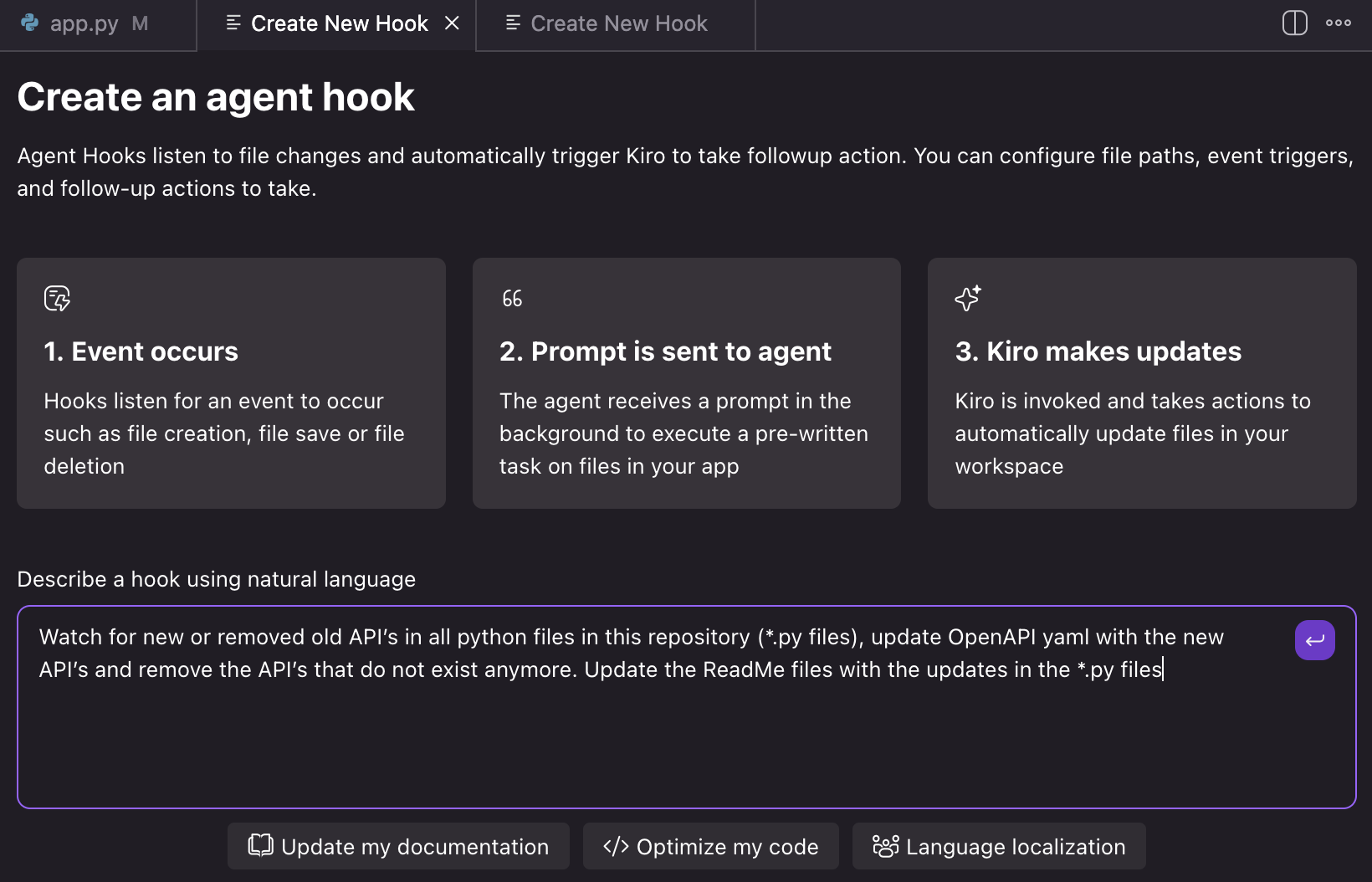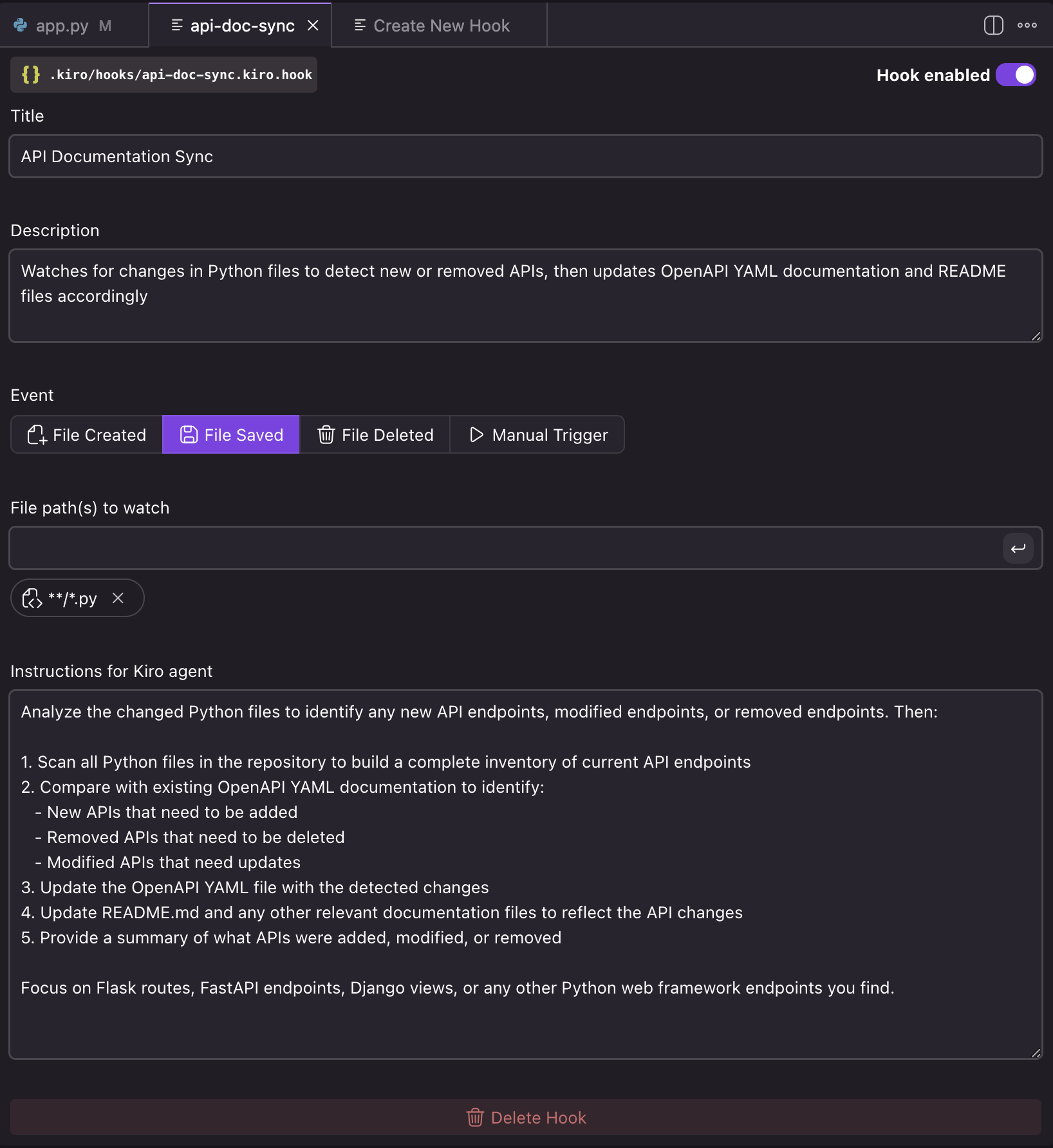How I stopped worrying about ReadMe files
Like most developers, I have been there: I push a brilliant new feature at 2 AM, feeling that familiar rush of dopamine as the build passes and deploys successfully. But three weeks later, when a new team member tries to onboard using my old README, they're staring at instructions for version 2.1 while my app is running version 3.2. The setup commands don't work. The API endpoints have changed. My beautiful documentation has become a liability.
Development teams often struggle with keeping documentation up to date, since manually updating README files with every code change is unrealistic in fast-paced environments. As a result, docs quickly become outdated and unreliable, slowing down onboarding and forcing developers to interrupt each other for answers. This constant disruption drains senior engineers, accelerating burnout and turnover, and when they leave, critical institutional knowledge leaves with them.
What if your documentation could update itself auto-“magically”?
Kiro's agent hooks solve this problem. Agent hooks are automated triggers that execute predefined agent actions when specific events occur in your IDE. Instead of manually updating documentation, you can set up hooks that automatically refresh your README when files are saved, update API documentation when endpoints change, and generate examples in your documentation when your code evolves.
How it works
1. Define the agent hook: Users can define their documentation requirements as an agent hook in natural language. Example prompt: “Watch for new or removed old API’s in all python files in this repository (*.py files), update OpenAPI yaml with the new API’s and remove the API’s that do not exist anymore. Update the ReadMe files with the updates in the *.py files. Figure 1 demonstrates the user creating an agent hook.

2. Kiro creates the agent hook configuration: Kiro translates your agent hook requirements into a configuration with a title, description, event, file paths to watch and Instructions that are sent to Kiro when event occurs. See best practices when defining hooks to understand this in detail.

In this case, the following configuration (in figure 2) was created using the example prompt in step 1. Kiro generated the title as ‘API Documentation Sync’, the event as ’File Saved’ (other hook types) , and set the paths to watch as all .py files in the repository. The instructions for the agent hook are also generated based on the initial user provided prompt during agent hook creation.
Agent Hook Creation
The creation of an agent hook (shows 1 & 2 sections)
Once the agent hook is created you will see that a json configuration is stored in the .kiro/hooks folder as a .hook file. In my case, the below config in figure 3 is stored. The agent hook configuration can be modified either through the UI or the .hook file that is generated. Configuration stored under .kiro/hook/api-documentation-sync.kiro.hook after creation of the agent hook:
3. Hook is triggered when event occurs: When events such as file save and file create occur, then agent hook is triggered and a new session inside Kiro opens in the background and runs. Developers can then accept or modify changes proposed via the agent hook session.
Let’s test the hook. Let’s say we prompt Kiro to “Help me add a new API to extract records as a CSV”, Kiro adds the new API endpoint in the relevant .py file. In the background, another session named “Execute hook: API Documentation Sync” is created in which Kiro updates the OpenAPI.yaml file and ReadMe files . Kiro also generates a CHANGELOG.md to track the change introduced. The following video shows how API Documentation Sync hook is triggered when a new API is added to ‘app.py’ file.
Agent Hook Triggered
What else can you do with agent hooks?
While README automation is powerful, it's just the beginning. Agent hooks can automate any routine task that would need to happen when your code changes:
Code optimization: Optimize code for readability, maintainability, and performance optimizations.
Language localization: Generate automated translations of user-facing text content
Security documentation: Update security considerations when you modify authentication code
Architecture diagrams: Refresh system diagrams when you change service integrations
Deployment guides: Update deployment instructions when you modify Docker configurations
Troubleshooting guides: Generate common error scenarios based on your exception handling code
Validate Figma design: Validates HTML/ CSS files that they follow a Figma design using the Figma MCP
And much more. Here’s a list of a few examples for with detailed agent hook configurations.
What matters in the end
When documentation stays current automatically, something magical happens: developers start trusting it again. They interrupt each other less. Developers spend more time in flow state, code quality improves, and features ship faster. But the benefits go deeper than productivity metrics.
New Developers onboard faster. Accurate documentation becomes your institutional memory. When senior developers leave, their knowledge doesn't walk out the door, it lives in the guides that agent hooks kept current throughout their tenure. Your documentation should be a living reflection of your codebase, not a snapshot from three months ago. With Kiro's agent hooks, you can focus on building great software while your documentation evolves automatically alongside your code.
Conclusion
I’m excited to see your all try setting up agent hooks in Kiro and see them in action on your projects. I would love to hear your thoughts on our Discord server. You can start with the documentation use-case we spoke about in this blog and expand to others that we have discussed above or mentioned in the documentation examples.
Considerations when using agent hooks
When implementing agent hooks with event triggers that utilize regular expressions (e.g., **/*.py), it is essential to carefully evaluate the pattern scope. Overly broad patterns may result in excessive changes when hooks are executed, leading to unnecessary documentation updates in large projects. It is recommended to implement more specific and targeted pattern matching to maintain efficiency and documentation clarity. See troubleshooting agent hooks.